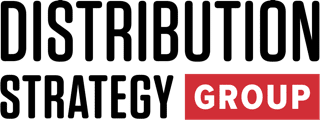The recent implementation of tariffs by the U.S. administration has created unprecedented challenges for distribution companies. With tariffs ranging from 10% to nearly 50% across various product categories, distributors will experience direct impacts on their operations:
- Compressed Margins: Even distributors with historically healthy gross margins could see those erode due to tariff-related costs.
- Supply Chain Disruption: Traditional sourcing relationships developed over decades are being reevaluated as the economics shift dramatically.
- Inventory Upheaval: Companies accustomed to just-in-time inventory models stockpiled ahead of tariff implementations, tying up working capital and increasing carrying costs.
For many distributors, the math is unforgiving. A 25% tariff on goods with already thin margins cannot simply be absorbed, yet passing costs directly to customers risks volume loss to competitors who might have secured pre-tariff inventory or alternative sourcing arrangements.
In 2019, I implemented one of the first AI-powered product recommendation and reorder recommendation engines for a distributor. The goal then was to drive sales growth in a challenging economic environment.
Today, we face a similar goal – growing revenue and preserving margins – but in a dramatically more disruptive landscape shaped by tariffs. The tactics and technologies that worked then have evolved, and the urgency has exponentially intensified.
Why AI Is No Longer Optional in Distribution
While tariffs are creating immediate pressure, they’re also accelerating a technological transformation that forward-thinking distributors have already begun. The rapid advancement of AI capabilities over the past two years has been counter to other technologies changes in distribution.
This isn’t an optional ecommerce change where distributors could simply choose to participate. AI isn’t discretionary; those who ignore it do so at their own peril. In my assessment, the current tariff environment resembles the COVID era in that it will accelerate the pace of change across the industry.
However, this technological acceleration is colliding with unprecedented market pressure. The need to deliver margin performance, sales performance, and productivity gains in the wake of tariffs means distributors can no longer afford to implement AI on traditional timelines. Plans that were scheduled for three- to five-year rollouts must now be compressed into 12- to 18-month implementations to still be competitive.
As someone who has implemented advanced analytics systems and has seen what today’s technology providers can do, I can attest that AI solutions offer transformative capabilities where distributors need them most. They also have faster time-to-value than ever before.
Here are some examples:
Pricing Optimization: Dynamic Margin Protection
Traditional cost-plus pricing models are proving dangerously inadequate in today’s volatile environment. AI-driven pricing platforms can:
- Analyze price elasticity across thousands of SKUs to identify where margins can be protected
- Factor competitive positioning into algorithmic price recommendations
- Deploy surgical price increases where customer sensitivity is lowest
- Project margin impact across multiple tariffs and competitive scenarios
Quote Automation: Speed and Accuracy Under Pressure
With costs rapidly changing, manual quoting processes are inefficient and error-prone. AI-powered quoting solutions deliver:
- Real-time cost basis updates that incorporate the latest tariff implications
- Automated approval workflows based on margin thresholds
- Competitive intelligence that flags high-risk quote scenarios
- Dramatically reduced response time to customer inquiries
A building products distributor recently reduced quote generation time from 48 hours to under 30 minutes while simultaneously increasing quote accuracy from 82% to 97% through AI-enabled automation – creating both cost savings and competitive advantage during a period of tariff-driven market uncertainty.
Customer Risk Identification: Heading Off Challenges Before They Occur
The power of AI lies in its predictive capabilities, particularly in identifying which customer relationships are at risk.
- Early warning systems that detect subtle changes in ordering patterns
- Sentiment analysis of customer communications that flag potential concerns
- Churn prediction models that prioritize at-risk accounts for proactive intervention
- RFQ pattern analysis that identifies competitive shopping behavior
Demand Forecasting: Planning Amid Uncertainty
Tariffs aren’t just increasing costs – they’re creating demand volatility that makes traditional forecasting models increasingly unreliable:
- AI algorithms identify demand pattern shifts in real-time.
- Machine learning models adjust forecasts daily based on leading indicators.
- Scenario modeling capabilities allow for contingency planning across multiple tariff outcomes.
- Automated safety-stock adjustments balance inventory costs against stockout risks.
Sales Team Empowerment: Delivering Personalized Experiences
Perhaps most importantly, AI is enabling sales teams to transition from reactive order-takers to proactive partners.
- Next-best-action recommendations that prioritize high-value customer interactions
- Opportunity scoring that finds accounts with expansion potential despite tariff pressures
- Talking-point generation that equips reps with data-driven insights about customer-specific impacts
- Cross-sell recommendations based on risk-adjusted customer propensity models
The Competitive Imperative: Why Wait-and-See on AI Is No Longer Viable
The tariff situation has created a clear dividing line in distribution. Companies that have already invested in AI capabilities are in a better position to weather the storm with less disruption, while those relying on traditional processes will experience compounding challenges. The ability to gain productivity and increase sales with AI will help distributors buffer some of the impact.
This divide is particularly stark given the acceleration of AI capabilities over the past 24 months. Tools that were complex just two years ago have matured into robust, accessible solutions designed for distributors.
The technological barriers have fallen right when economic pressures are mounting – creating both opportunity and urgency.
Distributors that deployed even basic AI applications before tariff implementation will be in a better position to maintain gross margin than their non-AI peers in the same product categories. This advantage compounds over time as AI systems continuously learn and optimize.
For distributors still on the sidelines, the message is clear: AI adoption is no longer a future initiative but a current competitive requirement. Technology has matured, implementation timelines have compressed, and the ROI case has never been stronger.
What many distribution executives planned as gradual, multi-year digital transformation initiatives must now be accelerated. Distributors that accelerate their AI adoption timelines will find themselves not just surviving the tariff challenge but emerging with a competitive advantage.
A Unique Opportunity: 2025 Applied AI for Distributors
For executives looking to jumpstart their AI journey, the upcoming Applied AI for Distributors in Chicago on June 24-26, 2025, presents a unique and timely opportunity. This focused industry event brings together specialized AI providers and experts with proven experience in the wholesale distribution industry.
Rather than conducting months of independent research and vendor evaluations, leaders can evaluate solutions specifically designed for the challenges outlined in this article. The conference features dedicated tracks in the areas where AI can mitigate tariff impacts.
With implementation timelines now compressed by market urgency, you can accelerate your selection process, learn from peers who have already navigated successful implementations, and build relationships with technology partners that understand the challenges distributors face.
I encourage distribution executives serious about staying competitive to join us at this event. Learn more or register today.
As Chief Operations Officer of a Distribution Strategy Group, I'm in the unique position of having helped transform distribution companies and am now collaborating with AI vendors to understand their solutions. My background in industrial distribution operations, sales process management, and continuous improvement provides a different perspective on how distributors can leverage AI to transform margin and productivity challenges into competitive advantages.


1 thought on “Are Tariffs the Wake-Up Call You Need to Embrace AI?”
We are very concerned about Tariff’s and inventory and Pricing and persevering our Profit margin.
We have a Microsoft Dynamics system.
I will be at the..l upcoming Applied AI for Distributors in Chicago on June 24-26, 2025”
Please let me know which vendors who I can contact for Ai Pricing Optimization: Dynamic Margin Protection, as discussed above?
We have just started with Spiro for a Ai
CRM system
Thank you